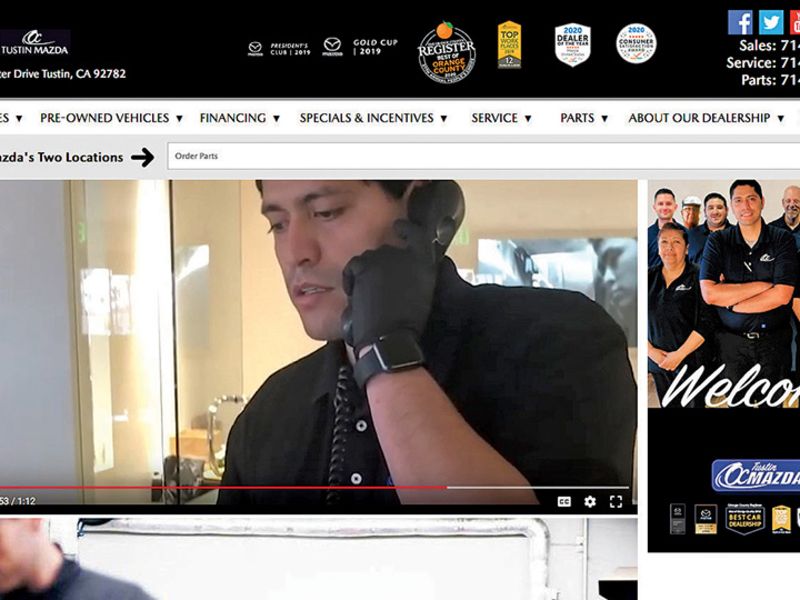
As COVID-19 state mandates shut down dealership retail sales, more targeted marketing efforts with bigger budgets were shifted to fixed ops departments that remained open as essential services.
“Many dealers made massive cuts to their marketing budgets, but they didn’t touch service,” says Alexi Venneri, CEO of marketing firm Digital Air Strike.
The sudden importance of service marketing in the early days of the pandemic led many dealers to closely examine new strategies. While dealership budgets have largely returned to normal, Venneri says a bigger-than- usual piece of the pie has gone to service marketing.
“If a dealership was only spending $5,000 a month on service marketing, it may have grown to $10,000,” she says. Dealerships should do even more but “it’s a step in the right direction,” Venneri says.
Other marketing companies report similar changes. From April to July, dealerships increased their service marketing budgets by 48 percent on average, according to data from digital marketing firm Sincro, formerly part of CDK Global. For that extra spend, says Laura Clapp, a senior vice president at Sincro, “our dealers have seen a 6 percent lift year-over-year in service website traffic.”
Consultant Glenn Pasch, president of PCG Cos., said targeted marketing “is really helping people get more for their money.”
He also says social media creates opportunities for better messaging, particularly video. Pasch says progressive dealers were already moving on precision targeting and video before COVID-19, but the pandemic accelerated both trends because customers suddenly were at home online all day.
The OC Auto Team, which operates four stores in Southern California, averages about 13,000 repair orders per month. But in the early days of the pandemic, “our repair order count was down significantly,” President John Patterson says.
During this time, the Tustin, Calif.-based dealership group redoubled its efforts with video and targeted marketing.
Starting in April, it worked with digital marketing agency PureCars to create videos about the cleanliness of the dealership and the safety customers could expect with their service experience.
“A critical piece of the puzzle has been making people feel they are 100 percent safe,” Patterson says.
The videos resonated enough to lead to more videos about the overall service experience at the store, including dialogues with service advisers and technicians. The videos performed well online and can be targeted to specific audiences.
Patterson estimates that the videos, based on customer surveys, may add a 3 to 5 percent lift in spending per repair order and convert a sizable number of online viewers to appointments.
Another marketing effort was pursuing their used-vehicle customers.
“In the past if a customer bought a Honda or Toyota from our store, we’ve let that customer go elsewhere,” Patterson says. “Now, we can’t afford to miss anything, and we are seeing more first and second oil changes on brands we don’t sell.”
Key to earning those customers is constantly testing small campaigns and properly using in-house databases, Pasch says.
“For example, who in your database needs tires and is at about 40,000 miles? Now you have a subset and that’s who you target,” he says.
OC Auto Team’s repair order count has returned to normal levels but Patterson says the marketing efforts have brought in more customers, while video inspections have helped lift individual repair orders.
Service gross profits for the year are up about 3 to 5 percent, he says.
The group spends roughly $2,000 to $4,000 per month on service marketing — about 15 percent of its total budget, an increase from 10 percent in 2019.
“There was a time when service marketing was 5 to 10 percent of our budget and we were questioning every dollar,” Patterson says. “Now we know, and we know if we’re stagnant in our marketing we’re going to lose out.”